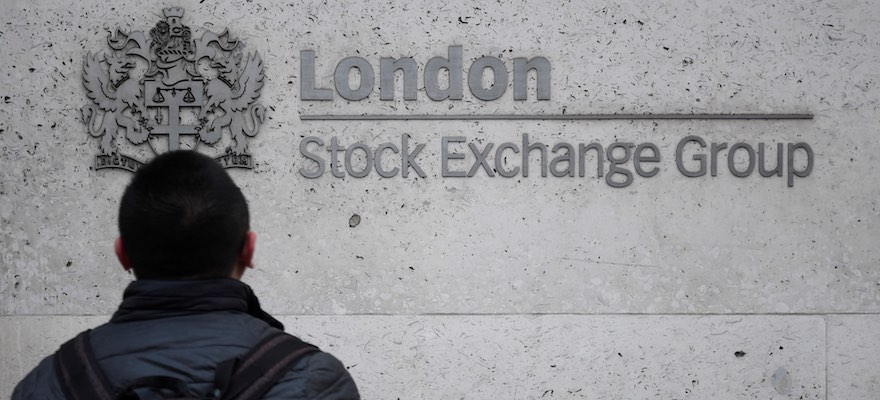The FTSE 100 tracks the top companies of the London Stock Exchange. It came into the market with 1000 value points on January 3, 1984. It allows investors to gain. The index exposes traders to the stocks of LSE.
Performance of FTSE 100 over the years
A variety of factors are impacting the companies’ growth the fiscal policy, interest rates, economic development and commodity rates. Since 1984, the average price return of FTSE 100 has been +6.8%.
The lowest annual return happened during the global financial recession in 2008; it went below -31 per cent to -31.3%.
However, the biggest trough decline was -52.6% in March 2003. During the year, the dotcom bubble collapsed during the year brought upon such misery, where several stocks fell one after the other.
Notably, the telecom giant BT Group’s share fell by almost 85 per cent amid the period compared to the peak. Investors had already been running away from the stock markets after 9/11 terrorist attack.
Thus, it was not less than a jolt. FTSE100 index plummeted to an all-time low of 3287 points in the month.
The great financial crisis (2007-08) was the darkest year for investors. The computer-driven models of trading led to the spread of the panic further.
As per analysts, these types of crashes are seldom and occurs rarely. After the index reached the trough, there was an improvement of +40.6 per cent in the next 12 months.
Different returns
The worst returns since the creation of FTSE 100 happened between 31st December 2000 to 31 December 2002. It was -33% and -18%.
From 31 December 1999 to 31 December 2004, the worst five-year phase of annualised return came. It was -4 per cent.
Similarly, the worst ten-year phase for return was between 31 December 1999 to 31 December 2008. It remained at +0.3 per cent on an average.
Over the past 35 years (1984-2019), here is the list of various returns.
Total annual Total return
Average +8.33% +657.81%
Worst +6.43% +375.31%
Best +9.99% +981.38%
Median +8.31% +606. 31%
Interestingly, in the past thirty-five years, FTSE 100 has not disappointed with returns to its investors. They have always been inflation-beating ones. 7.75% has been the nominal returns during the period.
Meanwhile, the inflation has been around 2.70% per cent, implying a hefty return of 5.05% after all deductions.
S&P Market
The stock market return over a decade is 9.2 per cent, as per Goldman Sachs’ data. However, the S&P 500 has performed better than the given numbers.
The annual return here is 13.6%. Although evaluating the data on a year-on-year basis, it paints a different picture. Brokers like ROinvesting are helping trade the index.
The S&P 500 includes top five hundred companies of the US. Here’s the data presented by Berkshire Hathway for the dividends over the years.
Annual Return Year
2019 31.5%
2018 -4.4%
2017 21.8%
2016 12%
2015 1.4%
2014 13.7%
2013 32.4%
2012 16%
2011 2.1%
2010 15.1%
The compounded annual profits for S&P 500 has been ten per cent since 1965, as per Berkshire Hathway.
Between the start and the close of 2018, the market witnessed the biggest low or fall, which was 4 per cent. However, the market accentuated and registered an increase of 31.5 per cent in 2019.
Open a Trading Account With These Recommended Brokers
DAX 30
It tracks 30 blue-chip companies listed on the Frankfurt Stock Exchange . It is the portmanteau of the Deutscher Aktien Index 30. During the foundation, it had 1000 as a base value in 1988.
Now, the Xetra trading venue has undertaken the computing of pricings from 2006.
Similar to other indices, it has seen its lows in 2003 and 2008 (Global economic crisis). Also, the COVID-19 impact stung it badly to make it plunge.
The German index is home to some leading stocks like VW, BMW, Siemens and Deutsche Bank.
Interestingly, DAX had posted great profits during the dotcom bubble in 1995. The US technology stocks and their evaluations pushed the German market.
From 1995 to 2000, the index hiked to 300 per cent. It touched the record mark of 8000 during the period from 2000.
Later on, seven years after, the price trended like the V shape, and it plunged to 2220 in 2003. However, it rallied again to touch the level of 2000 in 2007.
Another pull back the index saw was in 2008. However, the market ascended thereafter. It exhibited some cyclical corrections during 2011, 2015 and 2018.
At the beginning of 2020, the DAX 30 plunged to 8,250, a whopping 40 per cent drop from 13,800. However, it regained the lost glory in July 2020 by hitting back 13,800 again.
Conclusion: Between 2010 to 2019, the average return from the stock market remained 11.05 per cent, by looking at the S&P 500.
Whereas, looking at FTSE100, it grew from 1096.30 (6 April 1984) to 6617.15 (18 Feb 2021). In between, it touched several highs, and low but overall remained profitable for traders. Likewise, DAX 30 was 1504.80 on December 10, 1990. Now, it reached 13,886.93 on February 18, 2021.











